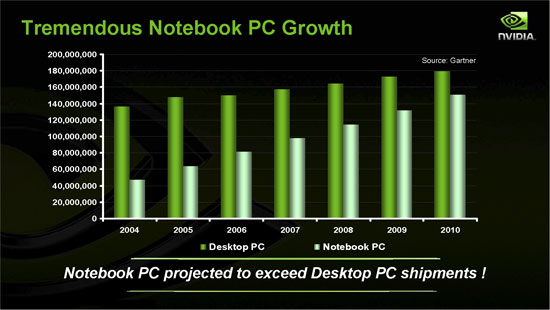


| GeForce 8M Series Specifications | |||||
| 8400M G | 8400M GS | 8400M GT | 8600M GS | 8600M GT | |
| Segment | Mainstream | Mainstream | Mainstream | Performance | Performance |
| Stream Processors | 8 | 16 | 16 | 16 | 32 |
| Core Clock | 400 MHz | 400 MHz | 450 MHz | 600 MHz | 475 MHz |
| Shader Clock | 800 MHz | 800 MHz | 900 MHz | 1200 MHz | 950 MHz |
| DDR RAM Clock | 1200 MHz | 1200 MHz | 1200 MHz | 1400 MHz | 1400 MHz |
| Maximum RAM | 256MB | 256MB | 512MB | 512MB | 512MB |
| RAM Interface | 64-bit | 64-bit | 128-bit | 128-bit | 128-bit |
| RAM Bandwidth | 9.6 GB/s | 9.6 GB/s | 19.2 GB/s | 22.4 GB/s | 22.4 GB/s |
| Texture Fill Rate | 3.2 GT | 3.2 GT | 3.6 GT | 4.8 GT | 7.6 GT |
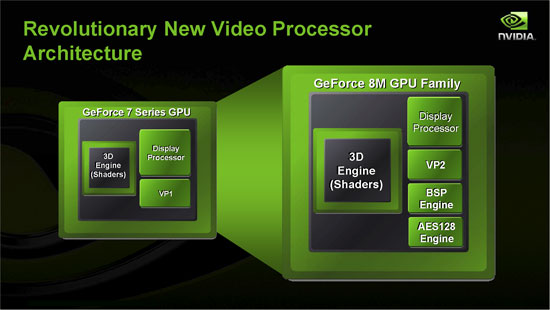
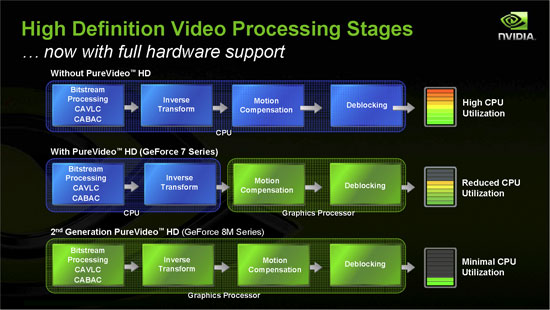
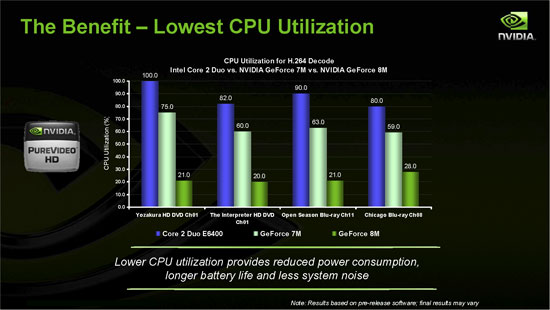


| NVIDIA Notebook Products Launching Today | |||
| Segment | Consumer | Business | Workstation |
| Enthusiast | |||
| Performance | GeForce 8600M GT GeForce 8600M GS | Quadro NVS 320M | Quadro FX 1600M |
| Mainstream | GeForce 8400M GT GeForce 8400M GS GeForce 8400M G | Quadro NVS 140M Quadro NVS 135M Quadro NVS 130M | Quadro FX 570M Quadro FX 360M |
| Value | GeForce 7190M + nForce 650M GeForce 7150M + nForce 630M GeForce 7000M + nForce 610M | ||
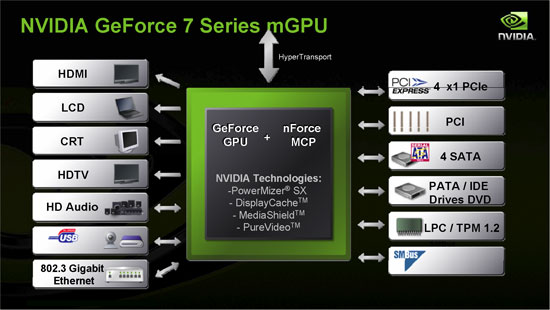
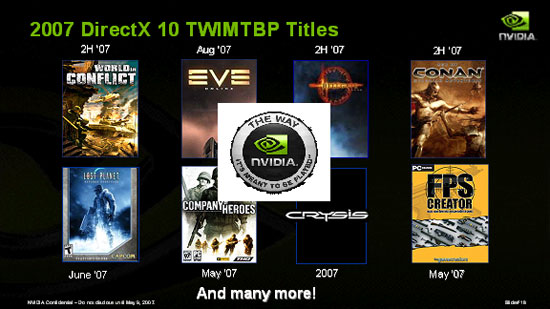








| 欢迎光临 鸿利在线|北京Thinkpad水货|IBM水货|Thinkpad笔记本|Thinkpad全球购|Thinkpad美行|Thinkpad水货笔记本|Thinkpad港行笔记本|Thinkpad T14|X13|P15|P17|P1隐士| X1 Carbon 9代 |T14S|2021款X1 Carbon|X1 隐士|Thinkpad非官方论坛|Thinkpad工作站|Thinkpad笔记本论坛|Thinkpad水货 (http://hongmz.cn:8989/) | Powered by Discuz! 7.2 |